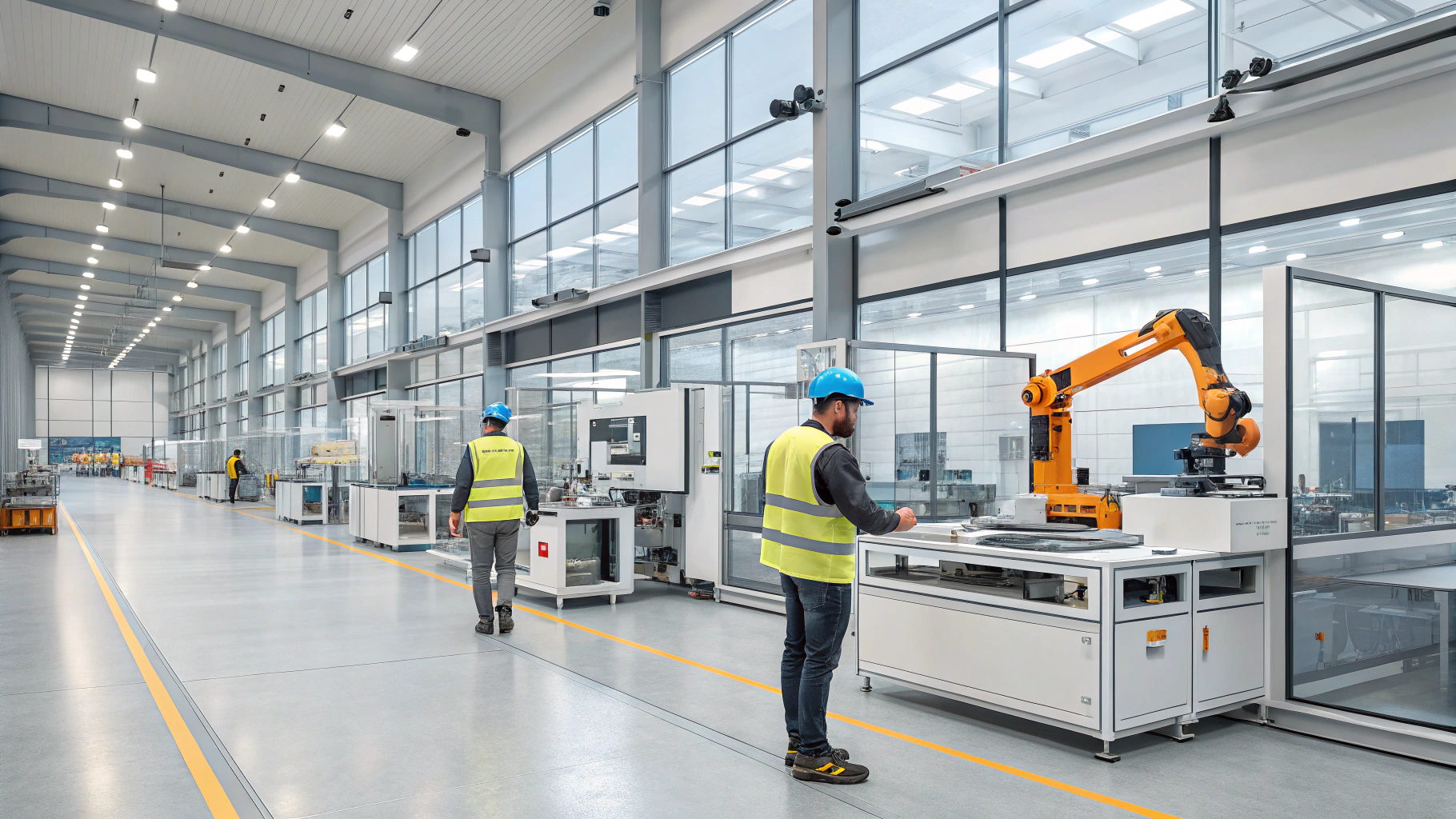Manufacturing is changing faster than ever. A globalized market, fluctuating demand, rising costs, and increasing pressure on lead times and flexibility — all of this means that simply producing is no longer enough. You need to produce efficiently. Every unnecessary step, every underutilized resource, every inaccuracy in planning or maintenance leads to a loss of time, money, resources, reputation — and ultimately competitiveness.

What is the key to sustainable efficiency? It’s not about pushing people harder or investing in new technologies without a clear strategy. The key is optimizing your manufacturing processes. But this isn’t a one-time project — it’s a systematic approach that constantly identifies bottlenecks, uncovers hidden reserves, and transforms data into tangible improvements in real time. That’s what drives lower costs, higher productivity, and overall better performance across your operations.
Why does manufacturing process optimization often fail?
Many companies have tried to “streamline” production in the past. They’ve modernized machines, adjusted shifts, introduced KPIs… Yet problems persist. Delays continue, costs rise, competitiveness drops. Why?
Because without reliable data, it’s impossible to objectively identify where the problems arise, what causes them, or how to fix them. Optimization efforts often stop at the symptoms — not the root cause.
And that brings us to the most common reason why optimization fails: many manufacturers still work with inaccurate or incomplete data. Data is collected manually, reports arrive late, and the numbers often don’t add up. As a result, decisions are based on guesswork, gut feeling, or outdated templates — not current reality. And without real data, there can be no real optimization.
What does truly effective optimization look like?
Manufacturing process optimization isn’t just about doing things faster or cheaper. It’s a far more strategic and systematic effort. It means understanding the entire value stream — from the moment raw material enters your facility to the final shipping of finished goods. The goal is to identify and eliminate anything that doesn’t add value for the customer. In practice, this includes several key steps:
✅ Gain complete and transparent visibility of your operations in real time. Because only with accurate, up-to-date data can you identify bottlenecks and make decisions based on facts, not assumptions.
✅ Minimize all forms of waste. Whether it’s time, material, machinery, human capital, or energy — any waste represents untapped potential and unnecessary cost.
✅ Optimize planning and production management. Instead of relying on ideal models or historical templates, you need to plan based on current priorities and real capacity — including staff, machines, and materials.
✅ Shift from reactive to predictive and condition-based maintenance. That means using real-time data about the current technical state and performance of machines — not waiting until failures occur.
What role does digital transformation play in this?
Thanks to digital transformation, data is no longer collected manually — it’s gathered automatically, straight from machines, production lines, sensors, and measurement devices. These insights are immediately connected with other systems like ERP, warehouse management, maintenance, or quality control.
The result is a Single Source of Truth (SSOT) — a consistent and reliable data layer that every level of management can trust, from operators to the CEO.
But to make such complex data flows work as one cohesive ecosystem, you need the right tools. This is where modern digital solutions like SCADA, MES, or EMS come into play. These systems together create an interconnected, centralized environment where data can be collected, analyzed, and visualized across the entire production process — in real time, from one place.
With this approach, data is no longer buried in complex tables — it’s transformed into clear, interactive dashboards that instantly show material availability, equipment status, energy consumption, production progress, or deviations from the plan. No more waiting for weekly reports or gathering data from multiple departments — everything is available instantly, in one place.
When efficiency drops, equipment fails, or anomalies occur, management can respond immediately. Manufacturing optimization thus becomes a proactive management tool, not just reactive analysis. Companies can prevent issues before they escalate. And even more importantly, optimization becomes a continuous, data-driven improvement process — not a one-off initiative.
A tailored solution from IoT Industries
At IoT Industries, we believe that real manufacturing process optimization starts with accurate data and well-connected systems. We help manufacturing companies set up their entire data pipeline — from collection to visualization — so they can make smarter, faster, and more confident decisions.
If you want to identify exactly where your losses are and how to turn them into savings and performance gains, we’re here to help. Let’s talk.
Why Choose IoT/IIoT Implementation with IoT Industries?
Traditional companies typically specialize in OT (operational technologies, such as production lines and devices) or classic enterprise IT systems. However, we are able to connect both of these worlds. Our unique expertise in integrating OT and IT allows us to deliver innovative solutions in digital transformation, enhancing efficiency, reliability, and competitiveness for manufacturing companies.